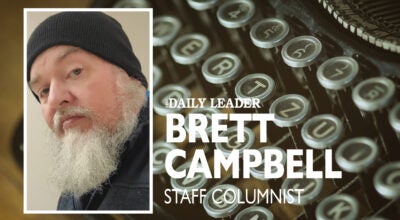Field trips can be very educational
Published 9:34 pm Tuesday, April 4, 2017
I knew it was going to be a spectacular week for a field trip when we pulled into the hotel parking lot, and it just happened to be located right across from Krispy Kreme. Cha-ching.
Hotel, you say? Oh, yes. Our homeschool group doesn’t just do regular field trips. We go on three-day educational excursions and exhaust ourselves plumbing the depths of an area. Doughnuts are just a bonus. So are picnics at Fort Maurepas and sunset bonfires on the beach, for that matter. But let’s be honest. There are a lot of bonuses to be had on the Gulf Coast.
There’re a lot of field trip possibilities, too. Our crew enjoyed climbing the spiral of stairs at the Biloxi lighthouse and watching a riveting film about Katrina in that city’s visitors center. We completed the park ranger’s scavenger hunt at the Gulf Islands National Seashore and made block prints at the Walter Anderson Museum in Ocean Springs. And all that was just Day 1.
Other hits on the itinerary included touching manta rays at the Institute for Marine Mammal Studies in Gulfport and getting spaced out at the Stennis INFINITY Science Center near Pearlington. My favorite stop, however — maybe my favorite field trip in 23 years of them — was at Ingalls shipyard in Pascagoula.
Ingalls advertises that its 800-acre tract of land represents some of the most important real estate in America. We know for sure that’s true in Mississippi, where Ingalls serves as our largest manufacturing employer, with more than 11,000 draftsmen, painters, engineers, welders, administrators, and other skilled workers on their payroll. We began our time at Ingalls by learning about those jobs and what it takes to get one. Our high school students toured the Ingalls Apprentice School where new hires are trained, then visited the machinist’s shop, saw engineering plans, and practiced painting on a state-of-the-art simulator. They also heard (loud and clear) about 401ks, paid college tuition, and Ingalls’ plan to hire 4,000 new employees this year.
Following that, we boarded a bus and rode through the actual shipyard. The facilities necessary to simultaneously build four classes of military ships (that’s more than any other shipyard in America) are pretty impressive. I can tell you this: everything at Ingalls is big — ginormous big.
Take, for example, the giant yellow crane we passed. Our necks stretched upward, then stretched some more to see all of it. Our guide told us that crane has set three world records, including one for moving the largest land object — 660 tons.
Next, we cruised past the Tripoli, a LHA like those routinely made at Ingalls. It will take about six years – three on land, the rest in the water – to finish construction of the Tripoli. At times, parts of the ship were in ten different places as work was being done on different sections. When completed, it will be roughly 14 stories tall and stretch the length of a football field and a half, and transport 3,000 soldiers, 1,800 Marines, and 1,200 sailors. It will have a hospital, dentist’s office, post office, morgue, jail, and bank.
Welders who work on such projects must be able to handle heights, because they’re often doing their jobs 150 feet up in the air. “It’s not too bad, unless it’s windy,” our guide told us. He added that Navy specs require that ships have no straights edges, which means they’ll be disguised as simple fishing boats on radar.
About that time, someone on the bus asked why there was a small building attached to the Tripoli’s front hull. The answer? Sonar equipment must be kept at a certain temp throughout the building process.
In one spot, metal pipes of all configurations lay in heaps, but the guide said there is rhyme to their reason. Pipefitters are known as the puzzle people, he explained. Runners in golf carts constantly move between the work site and these piles, getting whatever is needed.
The Kekoa o Kekai, a battleship already sold, floated at the edge of the Pascagoula River. While finishing touches are completed, sailors secure the premises. Workers must have clearance to pass through its gate.
We heard a lot about rust, which means there’s a lot of work for painters. As our tour came to an end, we skirted crowded parking lots where some of the cars were protected with tarps. “Paint travels in the wind,” the guide explained, calling it overspray.
One final time, we passed by the slogan that was posted throughout the premises: “What you do today matters.” Yes, it certainly does, especially when you’re building 75 percent of the U.S. Navy’s fleet of warships.
Field trips can be so very educational.
Kim Henderson is a freelance writer. Contact her at kimhenderson319@gmail.com.



